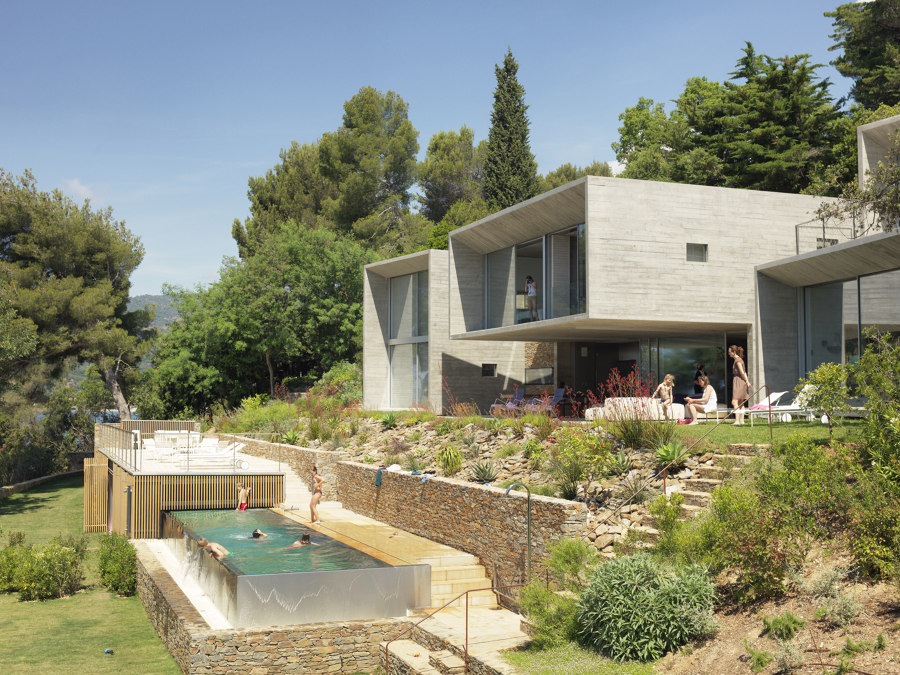
Photographer: Cyrille Weiner
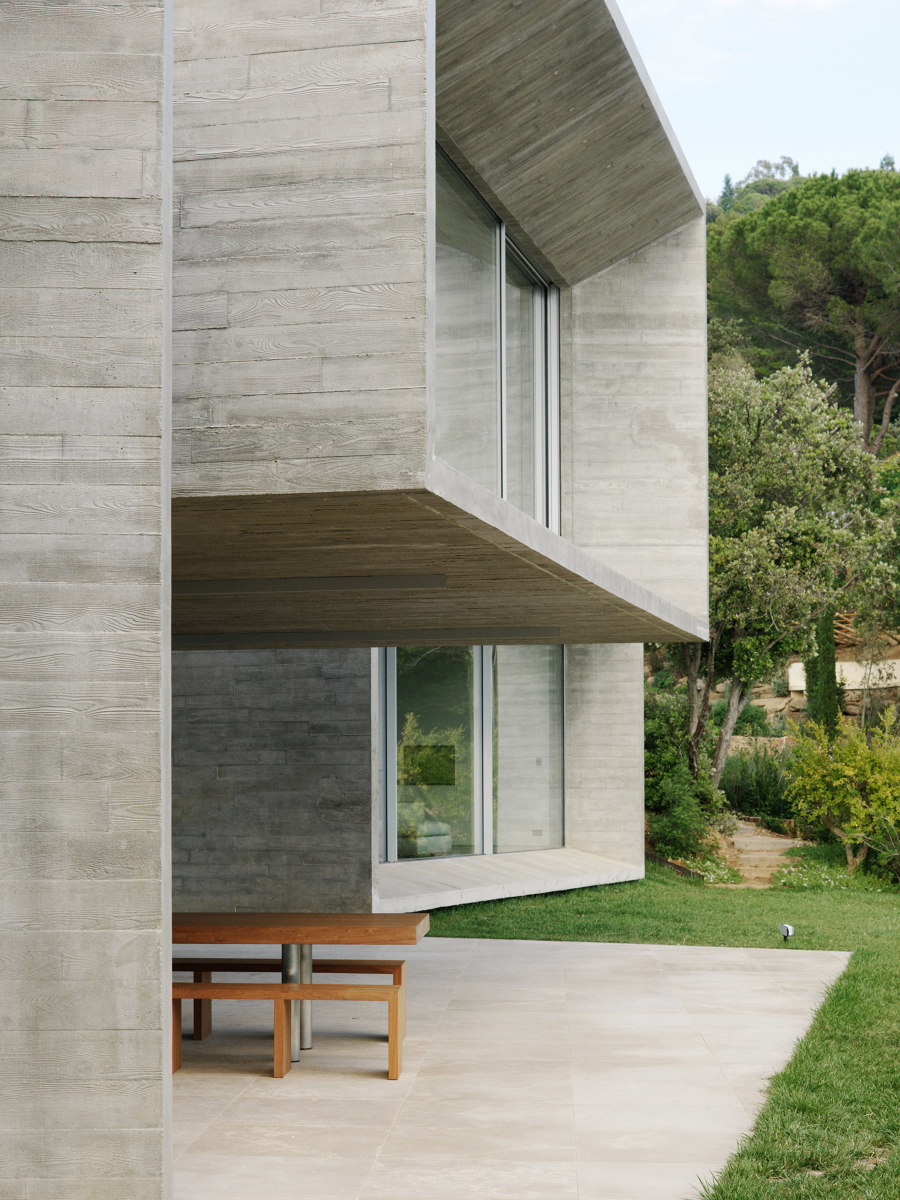
Photographer: Cyrille Weiner

Photographer: Cyrille Weiner
They are simple sky-reflecting concrete and glass cubes framed, or rather camouflaged by vegetation.
Pascal Grasso conceived a spacious vacation home that reinvents outdoors living in perfect harmony with the environment – a contextual architecture designed as an adapted response to the surrounding geography, landscape, climate and light.
Context
A wooded plot of land on the waterfront of one of the most beautiful sites along the Southern Var coast (France).
All around, a typical Mediterranean landscape of steep rocks, thin strips of sand, few coves, water…
All bathed in light.
His initial observations convinced Pascal Grasso to exploit the curve offered by the land, to play with terraces on various levels, to extend the existing dry-stone walls, yet adapting to the local sunny climate, as much as to the bad weather conditions and often-intense luminosity. The materials chosen echo to the coast’s mineral quality: raw concrete, stone, glass, stainless steel.
Poured in formworks, the bottoms of which were layered with sanded wood boards, the surface of the raw concrete retained the motif for a peculiar texture.
Sources
Willing to merge the building within the surrounding landscape, Pascal Grasso called upon images deemed relevant: notably Donald Judd’s series of concrete volumes in the desert near Marfa (Texas), or his cubes and parallelepipeds of identical volume in which the artist each time introduced a different variant.
And also Land Art and the inclination of its protagonists to use natural elements present on the site of their intervention.
While minimalistic aesthetic is one of the project’s formal influences, it also reveals a more conceptual approach. Pascal Grasso used a reflecting glass to bring forth notions of disturbance or transparency: in day time, nothing from the inside of the house can be perceived from the outside as the openings reflect the landscape (and this furthermore intensifies the way in which the four cubes merge in their environment). Dealing with this connection to the landscape also implied resolving the issue of the openings. More willingly speaking of screens rather than windows, the architect thought in terms of photographic or filmic framing.
The House
Pascal Grasso conceived a house divided into four volumes set in the landscape according to an orientation determined by the viewpoints and connected together by circulation spaces. Each of the four raw concrete boxes has a distinctive size and positioning (on the ground, in slight levitation, cantilevered, piled up): this was a means to take advantage of the tilted land by working with terraces at different levels, but also to interact with the surrounding landscape.
This refined vocabulary, refined to the essential, highlights the harmonious volumes and constantly brings back to the landscape. In order to leave nothing that could disturb the gaze, all the technical elements are integrated, which conveys a clear reading of the spaces; minimalism expressed through details, revealing the complexity of the project in terms of its conception and realization.
Architecte: Pascal Grasso Architectures
Entreprise Générale: Léon Grosse
Ingénierie structure/façades: ARCORA
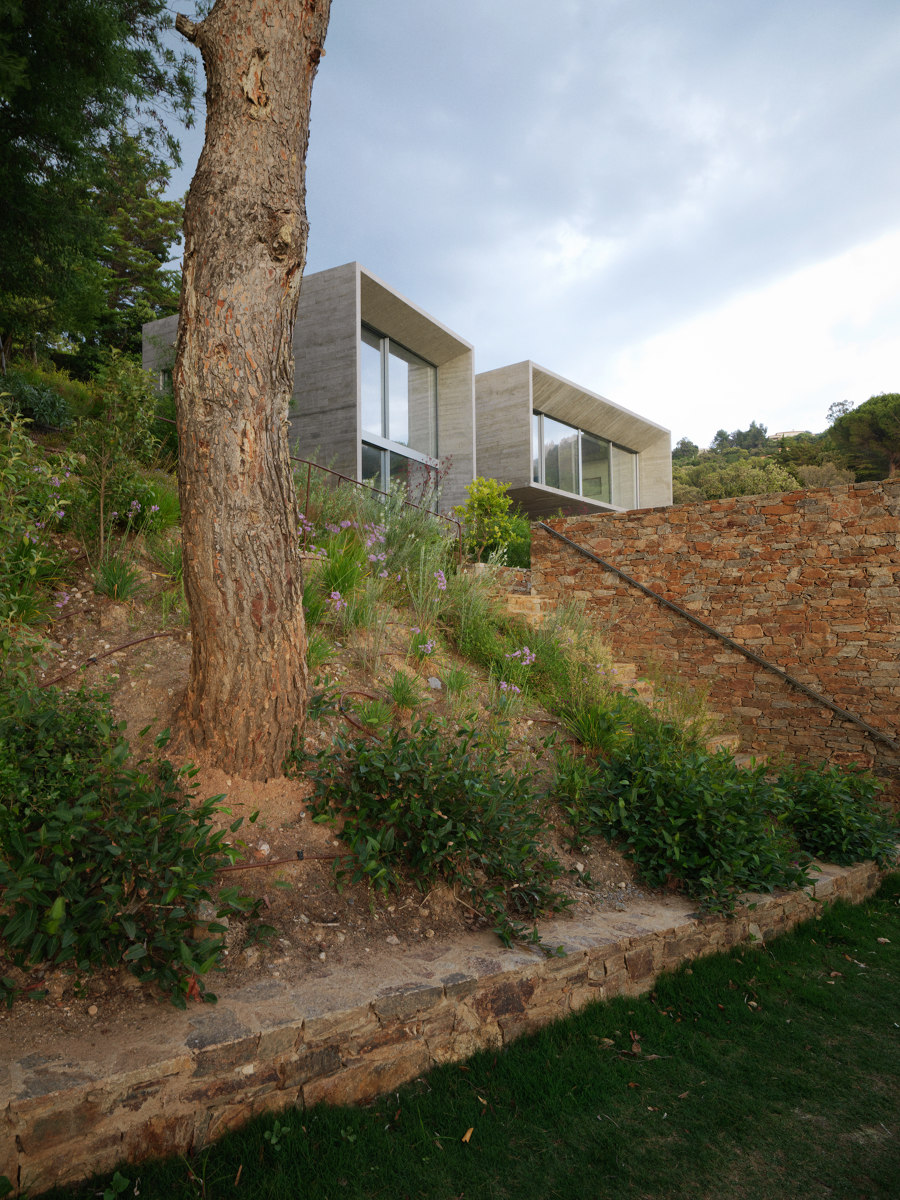
Photographer: Cyrille Weiner
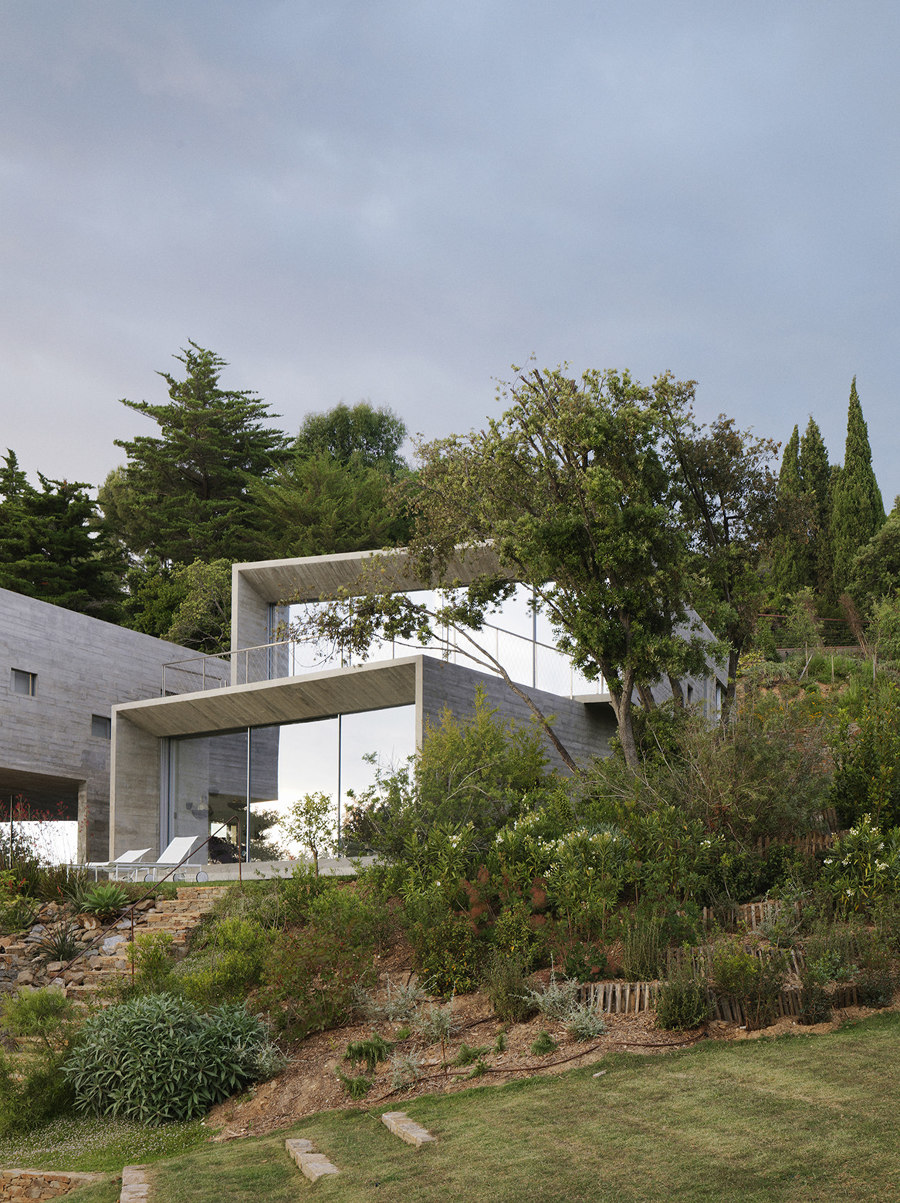
Photographer: Cyrille Weiner
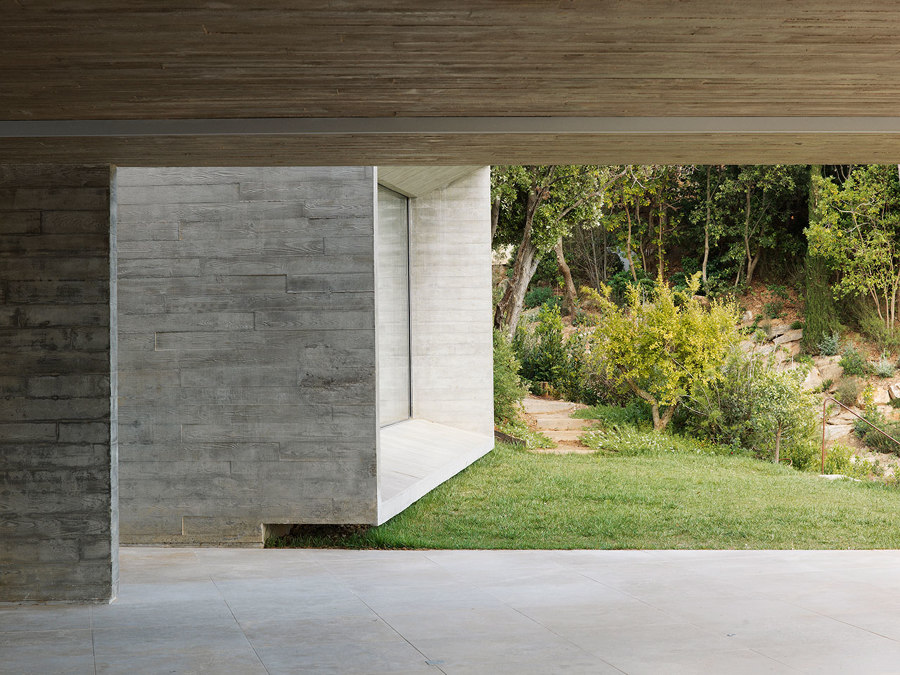
Photographer: Cyrille Weiner
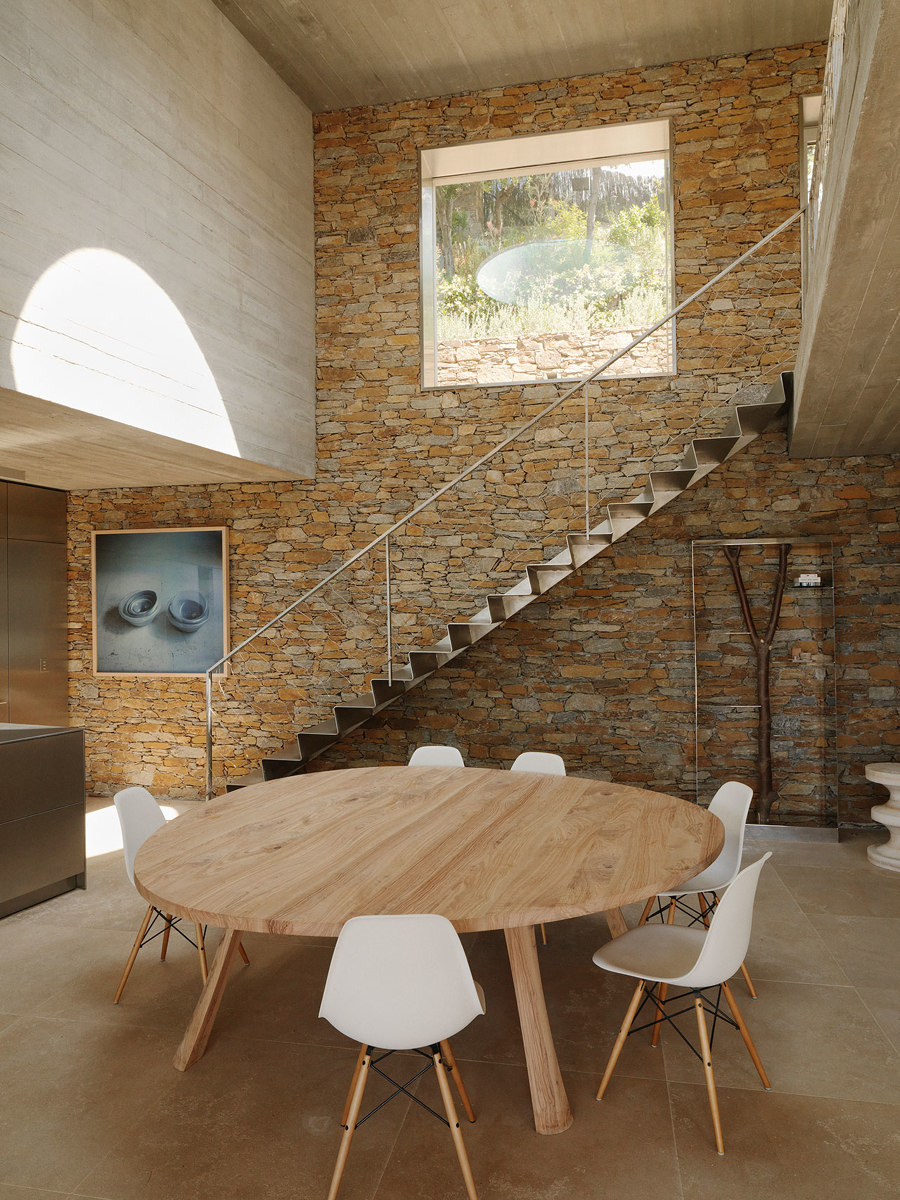
Photographer: Cyrille Weiner
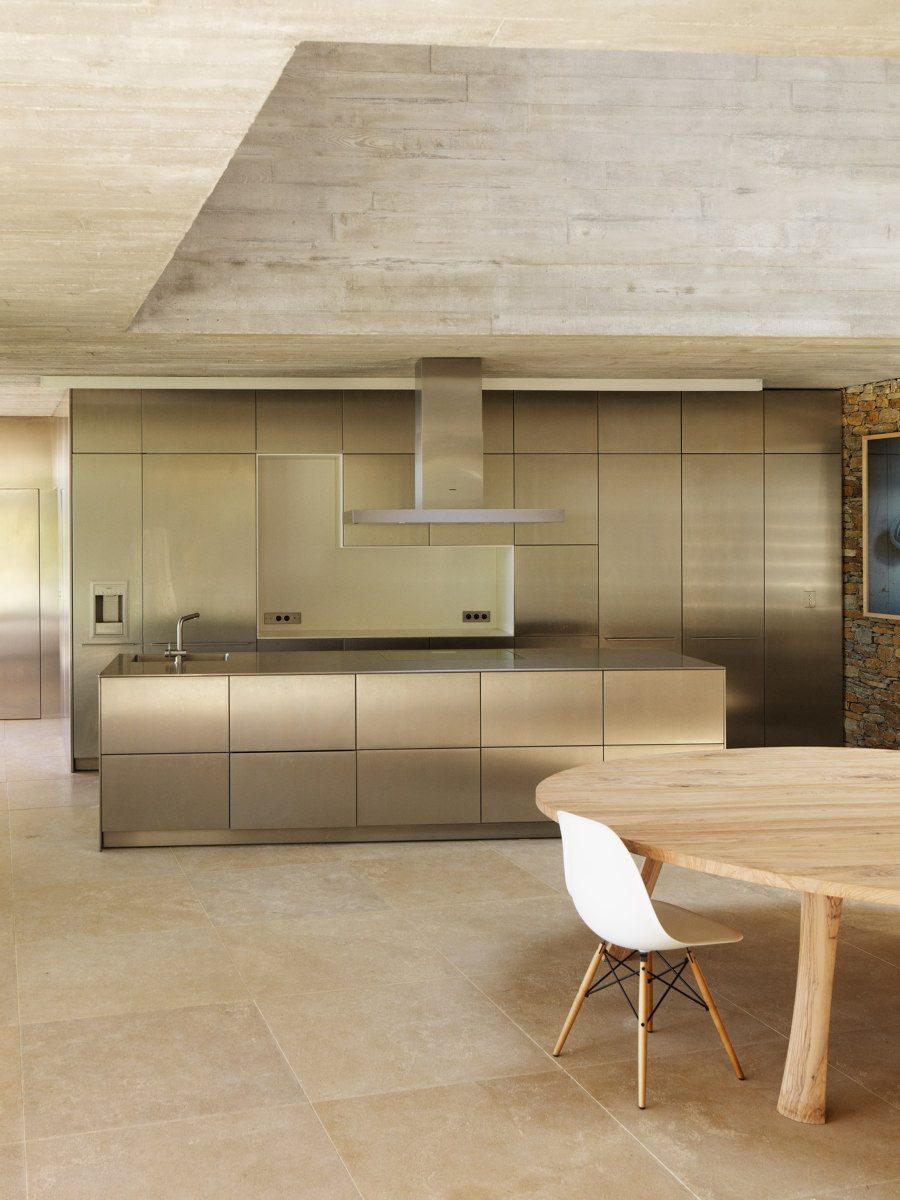
Photographer: Cyrille Weiner
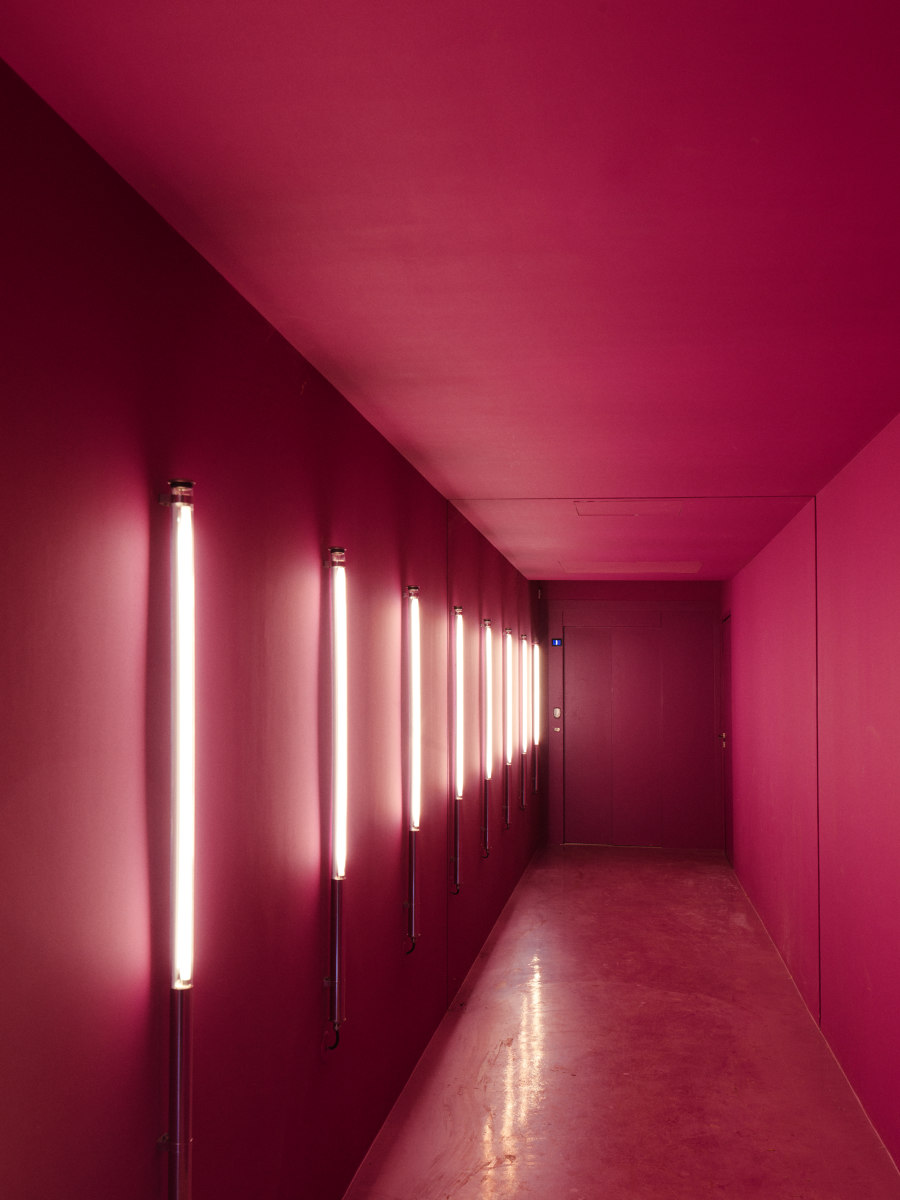
Photographer: Cyrille Weiner
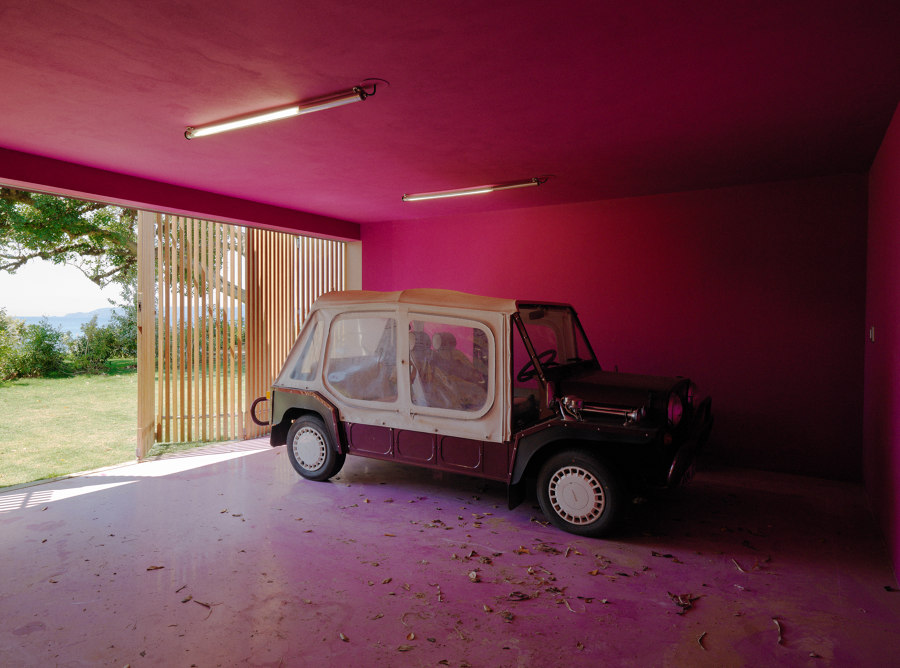
Photographer: Cyrille Weiner
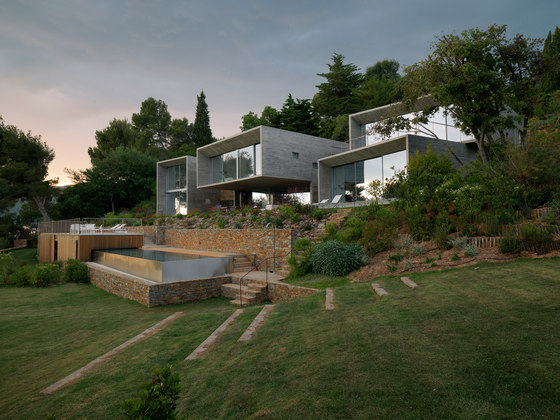
Photographer: Cyrille Weiner
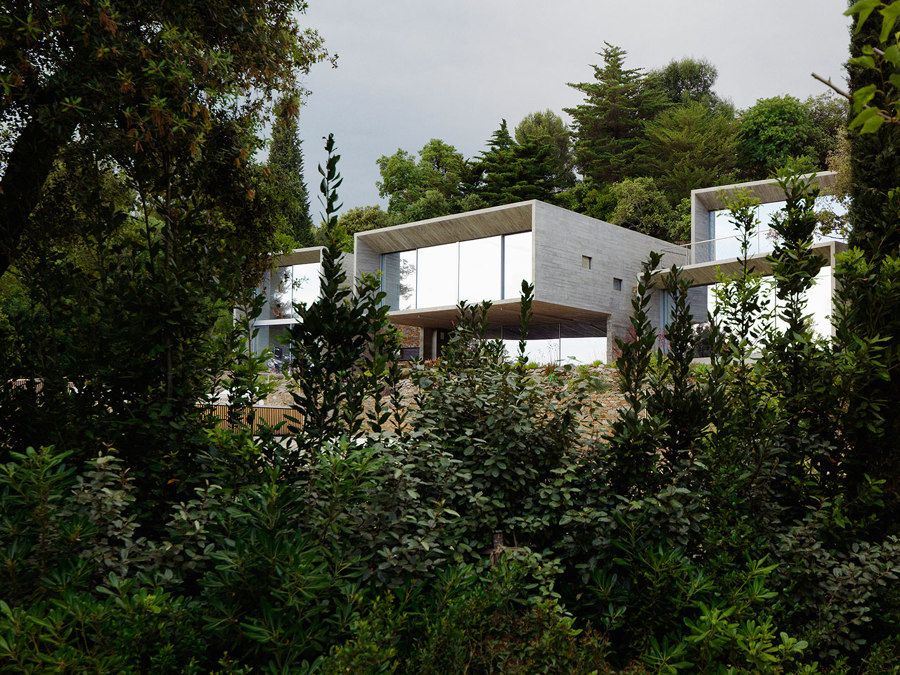
Photographer: Cyrille Weiner
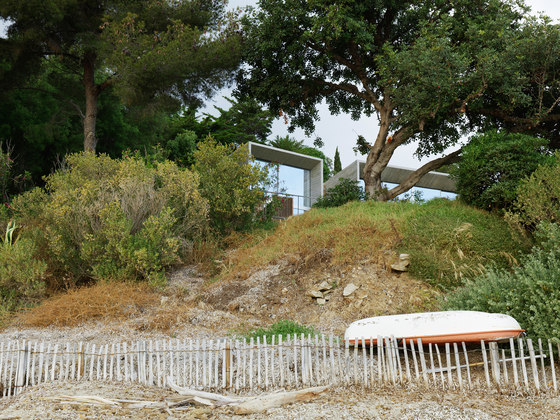
Photographer: Cyrille Weiner
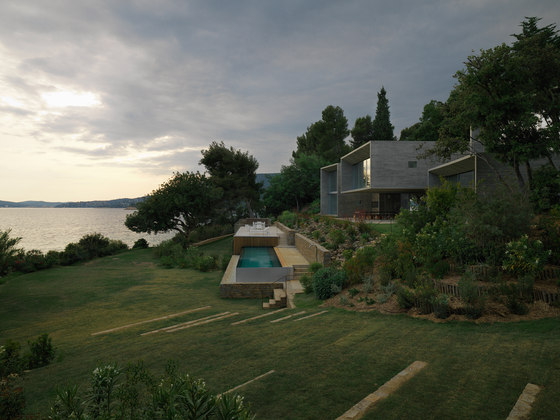
Photographer: Cyrille Weiner

Photographer: Cyrille Weiner

Photographer: Cyrille Weiner















